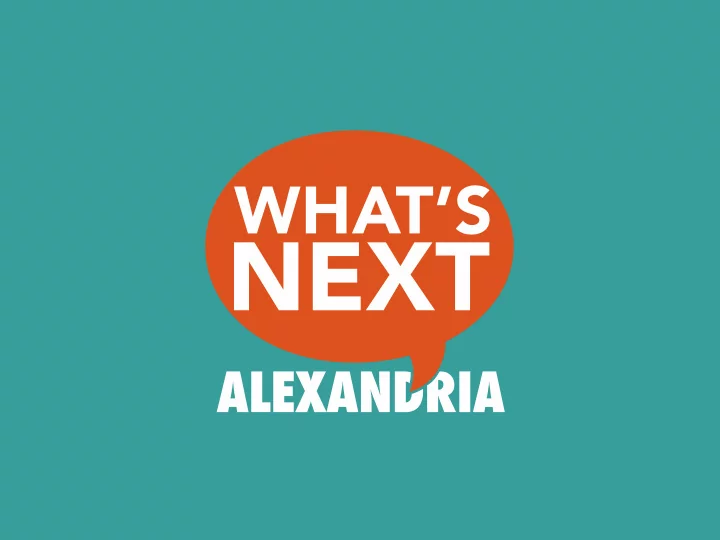

What and Why? A community conversation about civic engagement and planning for the future, and how Alexandrians can best participate in the public decisions that shape their City. • Expanding participation • Making public participation easier • Clarifying the City's and community’s shared expectations for the public involvement process . 2
Community Shaped Process • Small groups discuss/raise issues with report outs, rather than town hall where few get to speak • Minimize staff presentation time • Solicit input before issues framed/decisions made • Post verbatim feedback/summaries on website • Offer online opportunities to participate • Use members of the community as facilitators • Simplify language • Offering Spanish interpretation, childcare • Provide significant advance notice of meetings 3
Steps in the WNA Process September 2012 - June 2013 – Series of 4 community dialogues where participants worked together in small groups; also offered “virtual tables” – an opportunity to participate in real time online video engagement during the dialogues – 4 opportunities for online engagement, including online polls and online comment boards 4
Completed Sept-June : 1. Civic engagement principles: What standards are we all going to follow? 2. Civic engagement framework: What process we can expect for every project? 3. Communication and Engagement Tools: How can we expand the number of people who participate, and improve their experience? 4. Guidelines for successful implementation and evaluation: What do we need to do to make this work, and how will we measure success? 5
Handbook – Principles Respect Easy Participation Early Involvement Inclusiveness and Equity Meaningful Engagement Mutual Accountability Transparency Evaluation Sustained Collaboration 6
Handbook - Framework Why it’s needed: – Consistency throughout City government – Shared understanding of what to expect (phases, engagement strategies, tools, deliverables) – Build trust and transparency How it will be used: – Each project has a Civic Engagement Framework that the community helps to create – Content includes: Project goal, timeline, deliverables for each phase, and tools and activities required to accomplish goal 7
8
Handbook - Meaningful Engagement • Before event: early notice , clear agendas and access to background information • Type of event: what’s most productive for issue at hand? In person or online? Workshop, town hall or open house? • After event: prompt follow up , show how input is shaping next steps • Communications toolbox – what works best for broad participation? 9
Handbook – Successful Outcomes • Working together to solve common problems. • Public is well informed, has a clear understanding of how to participate. • More people participate in (and benefit from) City decisions. • Community takes an active role in organizing others. • City decisions/actions are accepted because they reflect public participation in a transparent process. • Engagement approach is consistent throughout City government. • Community and government have mutual trust. 10
Implementation • Some tasks centralized, managed by City Managers Office, others managed by Departments • Training for staff and community to improve engagement skills and understanding of WNA expectations • Ingrain WNA principles and framework into City government culture 11
Implementation City Manager’s Office - Set expectations: policies & procedures - Allocate resources for citywide training - Ensure consistent application of principles/framework - Manage performance accountability - Manage internal communication Departments/Staff - Attend training - Apply principles/framework to all projects in the City’s Interdepartmental Work Program - Develop scope and manage participation processes Interdepartmental Working Group 12
Evaluation Interdepartmental Working Group -- Review evaluations completed by departments -- Develop and share with community a proposed plan for future annual review, which would consider: Use of Framework – is it used consistently by applicable City processes? Does it need to be revised? Use of Handbook – is it used/referenced when designing engagement processes? Are elements out of date? Define process for updating Handbook when necessary. Communications/Outreach – have new avenues emerged? Are there new digital engagement techniques? Implementation structure – is there a problem with consistency or has the effort become too administratively onerous? 13
Upcoming Projects Upcoming projects in the FY14 Interdepartmental Work Plan will follow the principles, framework and guidelines in the handbook, including: • Public Art Master Plan • Eisenhower West Transportation Study and Small Area Plan • Bicycle Pedestrian Master Plan • Stormwater Management Plan 14
Next Steps • Sept. 6 - October 11 – Draft Handbook public review period; including online comment board • Sept. 3 - October 30 – Board and Commission briefings • October 28 – Revised Final Draft posted prior to public hearing • Nov 16 City Council Public Hearing • Nov 26 City Council Vote 15
• Questions or comments? 16
Recommend
More recommend